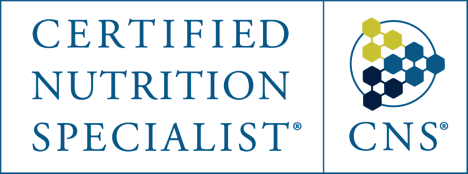Roni Enten Vissoker PhD
CNS, LDN
Individualized Biomedical Nutritionist


By Roni on February 17th, 2025
| Posted in Overeating, Picky Eaters, כללי
 Many children with ASD experience difficulties with the ability to sense internal body signals like hunger and fullness, also known as interoception. This can lead to challenges with eating, ranging from under-eating to overeating, due to lack of recognition of hunger or fullness.
Many children with ASD experience difficulties with the ability to sense internal body signals like hunger and fullness, also known as interoception. This can lead to challenges with eating, ranging from under-eating to overeating, due to lack of recognition of hunger or fullness.
Research suggests that differences in brain structure and sensory processing in individuals with ASD may affect how internal signals—like hunger, fullness, or even emotional cues—are perceived. Essentially, the brain regions responsible for picking up these internal signals might work a bit differently, or the connections between them might not be as efficient. This means that what feels like a clear cue for someone else might be muted, confusing, or misinterpreted in someone with autism. These differences in interoception can influence behaviors around eating, self-care, and emotion regulation.
Supporting children with such challenges requires patience, structure, and individualized strategies and understanding them can help children build healthier relationships with food and healthier bodies. Here are some key areas to hone in on and tips that you can begin to implement at home:
Establish a Meal and Snack Time Routine
Since hunger and fullness cues may not be reliable, structured eating times can provide a predictable routine for kids. Offering balanced meals and snacks at regular intervals ensures consistent nutrition without relying on internal signals. Discouraging grazing throughout the day helps support recognition of true hunger and fullness cues.
Use Visual and Sensory Cues to Signal Mealtimes
Visual schedules, timers, and portioned plates can help kids understand when it’s time to eat and when a meal is complete. Some children benefit from using portioned meal trays or bento boxes, making food intake more structured and visually clear. Using a song to invite them to the table and some kind of sensory preparation prior to meals can also encourage improved hunger and digestion.
Teach External Hunger and Fullness Awareness
Since internal cues may not be reliable, using external cues can help. Caregivers can encourage children to notice behavioral signs of hunger (e.g., low energy, irritability) and fullness (e.g., slower eating, feeling satisfied). A simple chart with visual or verbal scales (such as a “1-5 or 10 hunger/fullness scale”) may also help increase awareness. Eating to 80% fullness is another goal that both children and adults alike can benefit from, once awareness increases to prevent discomfort from over-eating.
Incorporate Mindful Eating Strategies
Mindful eating techniques, such as chewing slowly, pausing between bites, and discussing flavors and textures can help children engage more with food and their bodies. Encouraging a calm mealtime environment with minimal distractions also supports healthy eating.
Offer Nutrient-Dense Foods to Increase Satiety (Think protein and fiber!)
If a child tends to overeat due to poor satiety recognition, offering high-protein, fiber-rich, and healthy fat options can promote a sense of fullness. If under-eating is a concern, providing energy-dense, easy-to-eat foods can support adequate nutrition. Ensuring they consume enough key nutrients such as fiber and water is crucial for proper digestion and satiety. Encouraging hydration throughout the day can also help with appetite regulation and overall health.
Add Gut Friendly Fermented Foods
A healthy gut microbiome enhances natural GLP-1 production, so aim to add cultured foods such as yogurt, kefir, sauerkraut, miso and more to enhance this satiety inducing hormone.
Teach about Balanced Portions and Meal Composition
Teaching your child what a balanced plate looks like – this can provide valuable guidance to children who overeat. Using visual tools such as the “healthy plate” model dividing a meal into vegetables, protein, and whole grains can help to better understand healthy portion sizes and food groups as a starting point. Simple explanations and color-coded sectioned plates can reinforce healthy eating habits in a structured and non-overwhelming way.
Encourage Self-Regulation with Positive Reinforcement
Help your child recognize and respond to hunger and fullness cues with positive reinforcement to encourage eating independence. Praising efforts to pause and check in with their body, rather than focusing on meal quantity, can support long-term self-regulation.
Comments are closed.